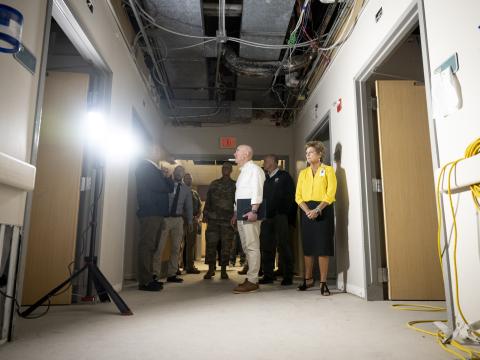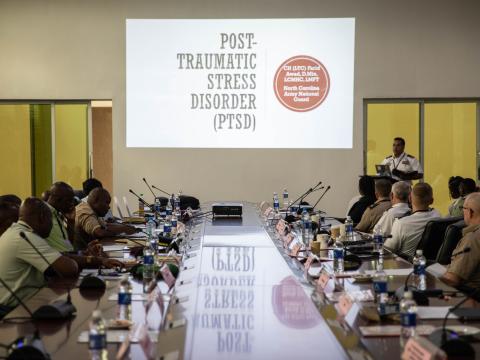Experts Consider Data Collaboration Strategies
Forum seeks solutions, progress reports on major networking programs.
Views about sharing and retaining classified and sensitive information are changing as the
AFCEA’s Tech Forum symposium, held in
Harris related that as part of NCES, the U.S. Army’s Knowledge Online capability will extend to the entire Defense Department as the proposed Defense Knowledge Online portal. DISA also is striving to leverage an Intelink capability into the military’s nonclassified Internet protocol router network. A search aggregator that would allow focused information retrieval across the network would be an important feature.
Challenges that exist as NCES is enabled include creating a service-level management agreement as increment 2 pushes capabilities out to tactical users. Another consideration is applying standards and specifications in a balanced manner to avoid stifling user creativity. Harris added that NCES requires governance to collect metrics and to guide customers in the development and deployment of applications and services. Leadership is key in promoting and managing a program such as NCES, Harris emphasized.
Information sharing at the military’s strategic and tactical levels occupied much of the discussion at the event. Michael Johnson, deputy associate director of national intelligence, Office of the Director of National Intelligence, highlighted the need for unclassified data sharing during disaster relief and stability operations. Noting that post-disaster coalition operations require cooperation among
During stability operations, Johnson noted, trust is important because social networking between the various groups is vital to operational success. Citing an example from the Hurricane Katrina response effort, during which the Defense Department applied rules designed for sharing information with foreign governments in assisting
Managing enterprise services at the tactical level was addressed by Ron Bechtold, director of Army Enterprise Architecture, Chief Information Office/G-6, who noted that the U.S. Army has been selecting collaboration tools for use in the field. He offered the example of how Stryker units deployed in
Kent Werner, the U.S. Air Force’s senior adviser, Cyberspace Transformation and Strategy, offered that in his service’s attempts to implement tactical enterprise capabilities, the main limitations were not technical. He explained that the Air Force’s Smart Operations 21 effort is focusing on a top-down change of the service’s architecture. However, as the Air Force moves to a globally integrated command and control architecture, he said, standards and protocols are the keys to delivering capabilities to warfighters and to transforming existing business practices.
Enabling agile collaboration for network-centric transformation is not as much of a technical issue as it is one of governance, network operations and policy, explained Michael E. Krieger, director of information management in the Office of the Assistant Secretary of Defense, Deputy Chief Information Officer. “We’re still operating need-to-know in a need-to-share environment,” he said.
Krieger said that Defense Department-wide information collaboration must be built around trusted and governable communities. However, in providing services for enterprises and mission areas, economies of the department must drive the services. He noted that his office is developing plans for when and where to implement governance processes. An example of these services is the Maritime Domain Awareness capability, which involved merging four government databases. Originally predicted to take nearly two years to complete, it was finished in eight months by using a different model to move the data.
Podcast and PowerPoint files from the Enterprise Services event are available at www.afcea.org/events/techforum/es/schedule.asp.



